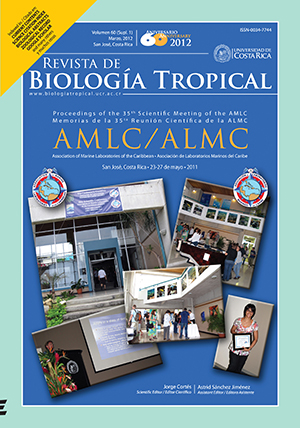Abstract
In many diverse ecosystems, ranging from natural surfaces in aquatic ecosystems to the mammalian gut and medical implants, bacterial populations and communities exist as biofilms. While the process of biofilm development has been well-studied for those produced by unicellular bacteria such Pseudomonas aeruginosa, little is known about biofilm development associated with filamentous microorganisms. Black band disease (BBD) of corals is characterized as a polymicrobial biofilm (mat) community, visually-dominated by filamentous cyanobacteria. The mat migrates across a living coral host, completely lysing coral tissue and leaving behind exposed coral skeleton. It is the only known cyanobacterial biofilm that migrates across a substratum, thus eliciting questions about the mechanisms and unique characteristics of this system. Fragments of the coral Montastraea annularis, five artificially infected with BBD and two collected from a naturally BBD-infected colony, were used to address these questions by detailed examination using scanning and transmission electron microscopy (SEM and TEM). In areas close to the interface of coral tissue and the mature disease band two types of clusters of cyanobacteria were observed, one with random orientation and one with parallel orientation of filaments. The latter exhibited active secretion of extracellular polysaccharide (EPS) while the randomly oriented clusters did not. Within the well developed band cyanobacterial filaments were observed to be embedded in EPS and were present as layers of filaments in parallel orientation. These observations suggest that BBD cyanobacteria orient themselves and produce EPS in a sequential process during migration to form the complex BBD matrix.Comments
Downloads
Download data is not yet available.






